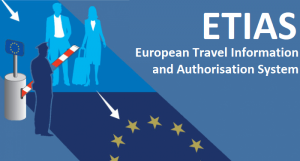How travel to the Schengen area will change in 2021

Citizens from over 60 countries are used to taking a quick business trip or holiday in Europe with no more paperwork than bringing their passport along —and making reservations with their favorite airline or hotel.
Visa waiver agreements between these nations and the Schengen Area will continue to make this possible throughout 2020.
Nevertheless, things are set to change in 2021 when the European Travel Information and Authorization System (ETIAS) is scheduled to become fully operational.
The European Union authorities have been working on the implementation of the ETIAS since 2016. As part of an integrated European Intelligence Agency, the ETIAS is being designed to work seamlessly with new and existing security systems.
The main driving force behind these systems is advancing in the fight against terrorism, improving security within the Schengen borders, and preventing illegal immigration —all while facilitating border crossing into the Schengen Area.
As soon as the ETIAS is in full force, all visa-free travelers will need to take a small procedural step in order to be able to visit any Schengen country for tourism, leisure, business, health or transit.
Although visa liberalization countries will retain their status, their nationals will have to complete a simple online form to register for an ETIAS prior to their departure towards Europe.
Similar to the US ESTA, the Canadian eTA, or New Zealand’s NZeTA, the ETIAS will grant holders multiple entries for short-term stays in Europe. An approved ETIAS will remain valid for 3 years, as long as the passport used to apply is current.
Unlike traditional consular visas, the ETIAS will be obtained entirely online, with a vast majority of requests approved in as little as a day. The visa waiver for Europe will not require visiting a European embassy, nor attending an interview with diplomatic personnel.
Perhaps one of the greatest advantages ETIAS gives travelers is that it grants holders access to all 26 Schengen nations —and European microstates Andorra, Monaco, San Marino, and Vatican city— by filling out a single online form.
The ETIAS will compile and automatically verify visa-exempt citizens’ data in order to determine whether they pose a risk to the safety and wellbeing of the Schengen Area and its residents.
Cross-checking applicant information against multiple security databases such as SIS, VIS, EURODAC, INTERPOL, and EUROPOL will help authorities prevent individuals considered dangerous from legally traveling to member states.
Other systems being implemented alongside the ETIAS include Passenger Name Records (PNR), and the Entry-Exit System (EES).
PNR is a joint system for EU police and justice authorities to access airline and other travel carriers’ passenger information. Traveler data is compiled for all trajectories to and from the European Union. PNR is only accessed when necessary to help prevent terrorism and other types of crime.
EES will electronically register the entry, exit and entry refusal of all third-country nationals visiting the Schengen Area. It aims to facilitate border control for member nations dealing with growing numbers of visitors. The automated system will help Schengen countries achieve this without having to resort to hiring a larger number of immigration officials to work at the border.
Although from a passenger’s perspective an additional procedural step may seem like a bit of a hassle, the overall benefits —including smart borders and more efficient passport control at Schengen airports— will be well worth it for residents and visitors alike.

